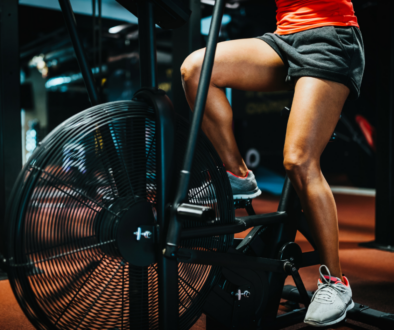Q&A:Two-A-Days
Q: Do you think it’s possible that my body feels physical stress when I work out more than once a day? For example, working out at noon and then spinning at 4:30? I’m thinking about this because I couldn’t spin today and I feel really good and not exhausted at this point in the day like I normally do. I may be way off on this but I thought I would throw it out there and ask your opinion on it.
-K.H.
A: Great question and you are actually not way off. Exercise IS a form of stress on the body. When done correctly, however, it can be good for us. As a result of exercise, we see improvements in:
- blood pressure
- resting heart rate (decreases)
- blood cholesterol levels
- body composition
- immune function
- cardio-respiratory function
- bone density
- muscular strength and endurance
- joint function, stability, and flexibility
- coordination and balance
- ability to manage stress
- mental alertness
- overall energy, sense of well-being, and self-confidence
If we are not exercising correctly (overtraining, under-fueling), we feel tired, run-down, stressed, we experience pain or injuries, we get sick more often, and we don’t see and feel the results the results we are looking for: looking better, getting stronger, improving our endurance.
We can ensure we are not overtraining by:
- following a progressive, periodized strength and cardio-respiratory training program
- taking rest days (1-2/wk)
- practicing yoga (2 days/wk)
- foam rolling/self myofascial release (at least 4 dys/wk)
- monitoring heart rate during cardio-respiratory training:
I recommend wearing a heart rate monitor during cardio-respiratory training. Train no more than 2 days per week in the higher intensity/anaerobic Zones 2 & 3 (75-92%max HR). Train at least 1 day per week in Steady State/aerobic Zone 1 training (65-75%max HR). If we train more than 1 day per week in Zone 1, that will replace a Zone 3 training day. Zone 1 training is where we improve our endurance, strengthen our heart and lungs, aide in recovery, and train our bodies to efficiently burn fat all day long for fuel. Remember when we are anaerobic in Zone 2 and 3, we are burning mostly carbs, which is not how our body works at rest.
We also want to monitor our resting HR. It should go down as a result of effective training. Check resting heart rate in the morning. If it’s elevated, the body hasn’t finished recovery from the previous day’s session. The heart rate remains elevated because we are still in EPOC: Elevated Post-exercise Oxygen Consumption, i.e. burning more calories than usual. EPOC can last 24-36 hours after training. It is longer following higher intensity interval training. This the time when the body is repairing tissue, building muscles, and replenishing glycogen stores after a strength or cardio session. We need rest and fuel (CARBOHYDRATES) to get that done.
With proper training, we can be successful at two-a-days, but like anything else we need a progressive, periodized program to avoid overtraining.
The bottom line is that exercise and fitness should enhance our lives outside of the gym. If you are tired, in pain, stressed, your body is telling you something.
Email me if you have a training question or to find out how personalized programing can help you reach your goals faster and safer.
Alicia Cross is a Certified Personal Trainer, Wellness Coach, and Yoga Instructor with more than 15 years’ experience working with clients in classes and one-on-one. She is a yogi, meditator, vegan, and lifter of heavy things. If you’re ready to discover the strength and peace that comes from within, email Alicia@AliciaCrossTraining.com.



